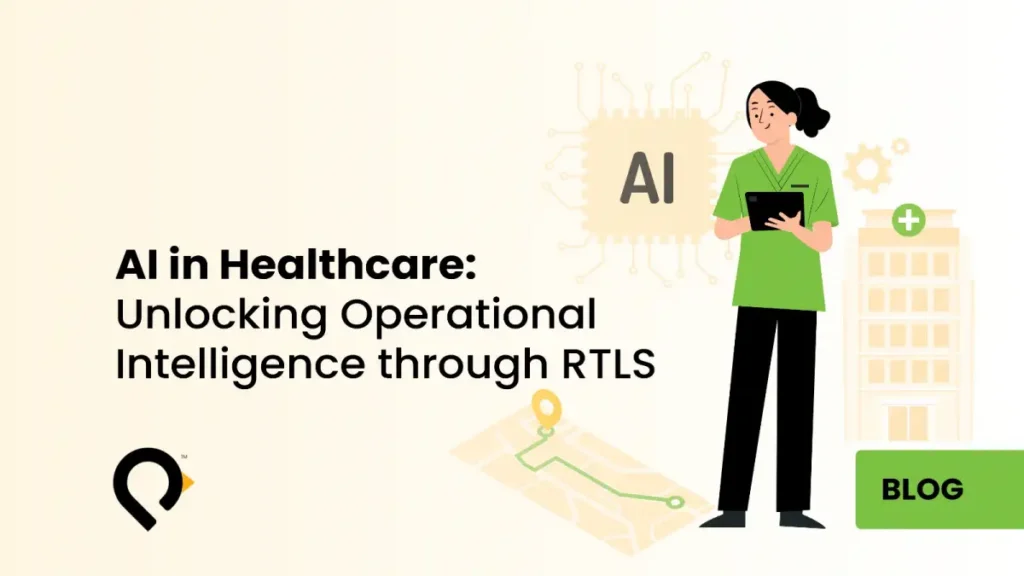
Hospital Asset Tracking: Transforming Healthcare Operations in 2025
Healthcare is constantly evolving, and hospitals must adapt to maintain high standards of patient care. As we approach 2025, hospital asset tracking powered by IoT technology has emerged as a critical solution. Moreover, this technology addresses one of healthcare’s most persistent challenges: knowing where equipment is when you need it most.
Understanding Hospital Asset Tracking Systems
Hospital asset tracking uses IoT sensors and BLE 5.1 technology to monitor medical equipment in real-time. Specifically, these systems track thousands of assets including infusion pumps, wheelchairs, ventilators, and diagnostic equipment throughout hospital facilities.
Furthermore, this standardized infrastructure leverages off-the-shelf hardware, which significantly reduces implementation costs. As a result, hospitals benefit from a lower Total Cost of Ownership (TCO) while ensuring reliable system maintenance and long-term sustainability.
How Asset Tracking Transforms Hospital Operations
From Equipment Loss to Complete Visibility
Traditionally, hospital staff spent valuable time searching for misplaced equipment. However, with modern asset tracking systems, nurses and clinicians can instantly locate any tagged device through a mobile app or computer interface. Consequently, this eliminates wasted time and ensures equipment is always available when patients need it.
Optimizing Equipment Utilization
Beyond simple location tracking, these systems provide detailed utilization data. For instance, hospitals can identify underused equipment and redistribute assets to high-demand areas. Additionally, tracking systems reveal usage patterns that help with strategic purchasing decisions. Therefore, facilities can optimize their equipment inventory and reduce unnecessary capital expenses.
Preventing Equipment Loss and Theft
Hospital assets frequently go missing or leave the premises unintentionally. Nevertheless, asset tracking systems create virtual boundaries and trigger alerts when equipment moves beyond designated areas. As a consequence, hospitals can recover assets quickly and prevent costly losses.
Key Benefits of Hospital Asset Tracking
Enhanced Patient Care
First and foremost, asset tracking ensures uninterrupted patient care. When critical equipment is immediately available, healthcare teams can respond faster to emergencies. Subsequently, this improves patient outcomes and satisfaction.
Improved Staff Efficiency
In addition to helping patients, these systems empower healthcare professionals with instant access to necessary resources. Rather than spending 20-30 minutes searching for equipment, nurses can locate devices in seconds. Thus, they spend more time on direct patient care.
Smarter Resource Management
Meanwhile, facility managers gain actionable insights into equipment utilization patterns. These analytics enable proactive maintenance scheduling, which reduces unexpected downtime. Furthermore, managers can make data-driven decisions about equipment allocation and future purchases.
Maintenance and Compliance
Asset tracking systems also automate maintenance schedules and compliance tracking. For example, the system can alert staff when equipment requires calibration or inspection. Consequently, hospitals maintain regulatory compliance and extend equipment lifespan.
Implementing Asset Tracking: Practical Considerations
Choosing the Right Technology
When selecting an asset tracking solution, hospitals should prioritize BLE 5.1 technology for its accuracy and low power consumption. Moreover, standardized systems ensure compatibility with existing hospital infrastructure. In contrast, proprietary systems may limit future flexibility and increase costs.
Tagging Strategies
Successful implementation begins with a comprehensive tagging strategy. Initially, hospitals should tag high-value and frequently used equipment. Then, they can gradually expand to include additional assets. Meanwhile, staff training ensures proper adoption and maximizes system benefits.
Integration with Hospital Systems
Modern asset tracking platforms integrate seamlessly with existing hospital management systems. Therefore, data flows automatically between systems, eliminating duplicate data entry. Additionally, this integration provides a holistic view of hospital operations.
Building Tomorrow’s Smart Hospitals
Hospital asset tracking serves as the foundation for smart hospital initiatives. Indeed, the data generated by these systems enables healthcare organizations to assess operational efficiency and identify improvement opportunities. Furthermore, hospitals can use this data to anticipate challenges and implement preventive strategies.
Looking ahead, asset tracking technology will expand beyond equipment to include real-time location services (RTLS) for staff and patients. Consequently, hospitals will achieve even greater operational efficiency and safety improvements. In fact, leading healthcare facilities are already using these comprehensive tracking solutions to transform their operations.
The Bottom Line
Hospital asset tracking, powered by BLE 5.1 technology, empowers healthcare organizations to eliminate equipment search time, optimize resource utilization, and enhance patient care. Instead of reactive equipment management, hospitals can now take a proactive approach based on real-time data and predictive analytics.
Ultimately, investing in hospital asset tracking is not just about finding equipment—it’s about creating a more efficient, responsive, and patient-centered healthcare environment. As hospitals face increasing pressure to improve outcomes while controlling costs, asset tracking provides a clear path forward.
Ready to transform your hospital operations? Discover how Penguin’s BLE 5.1 Technology can help you implement an affordable, future-proof asset tracking system that delivers measurable results.




